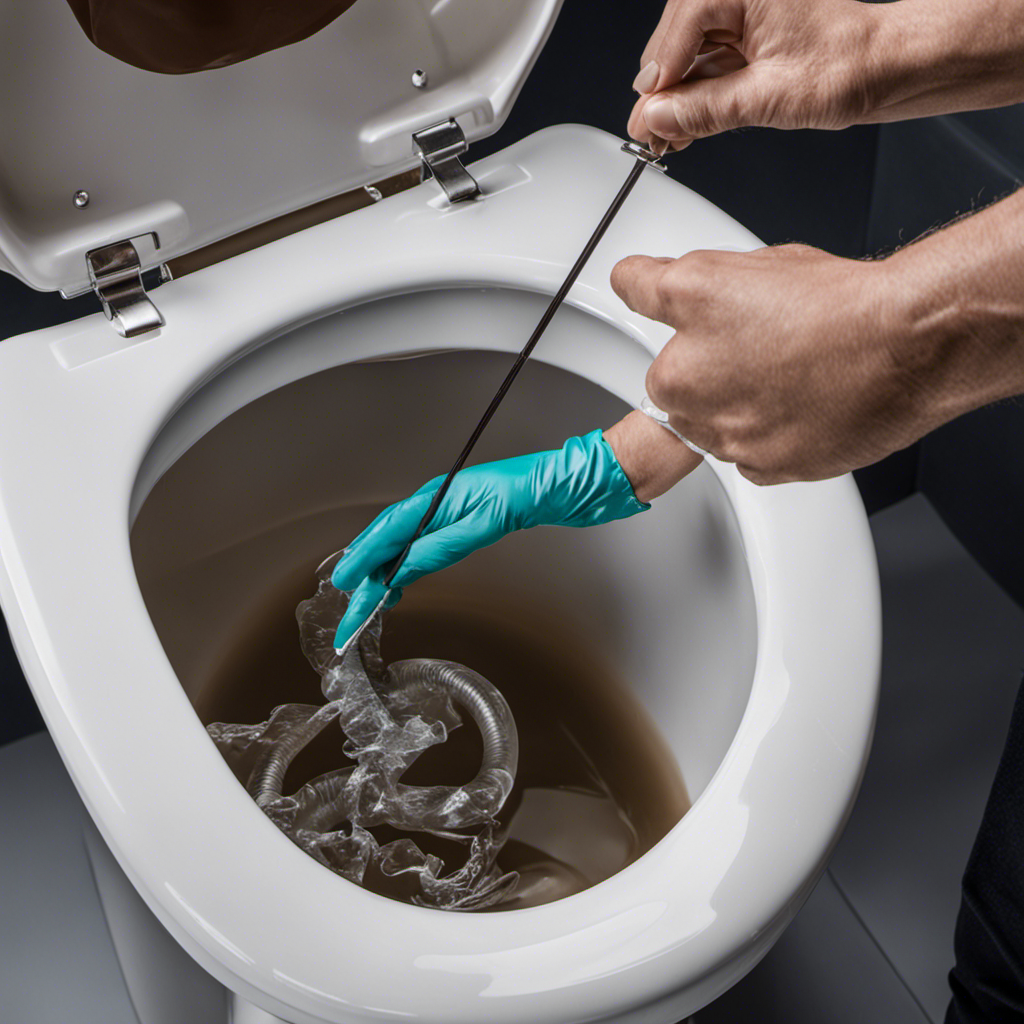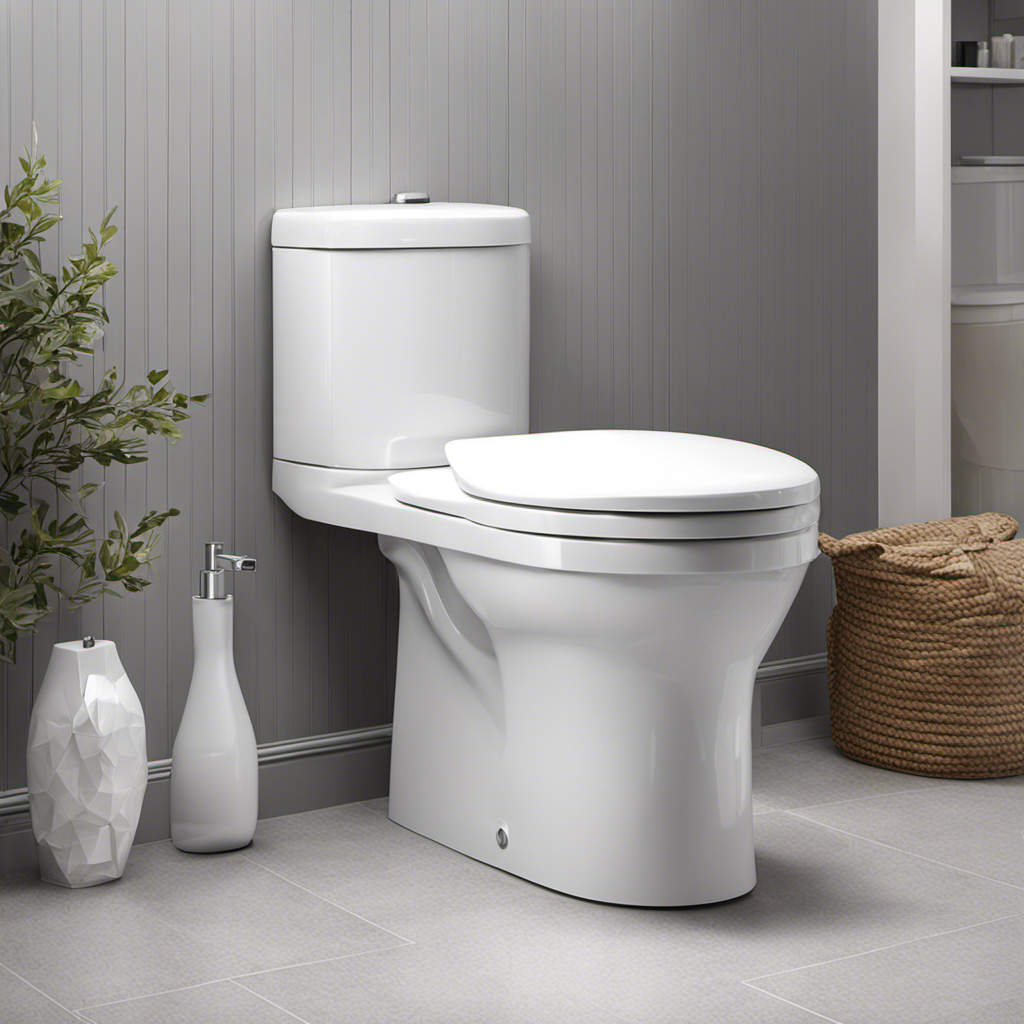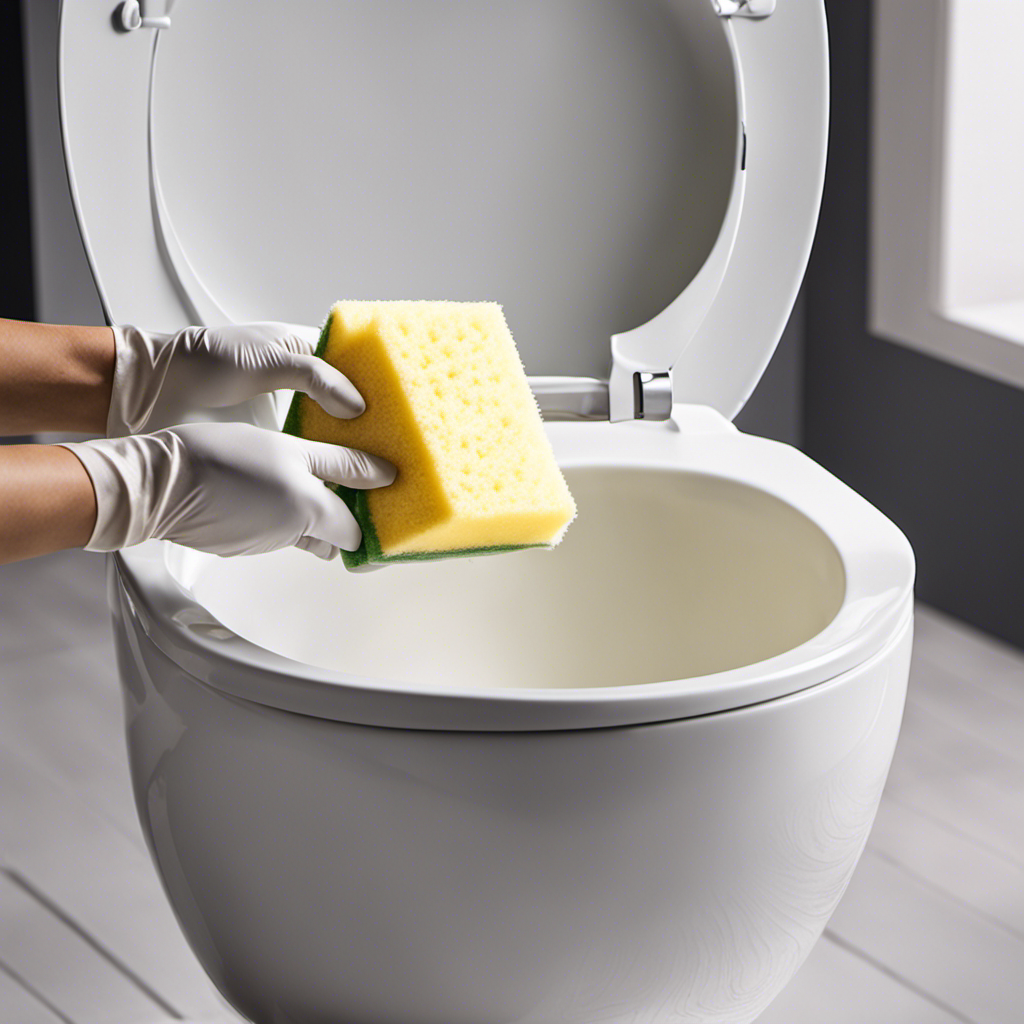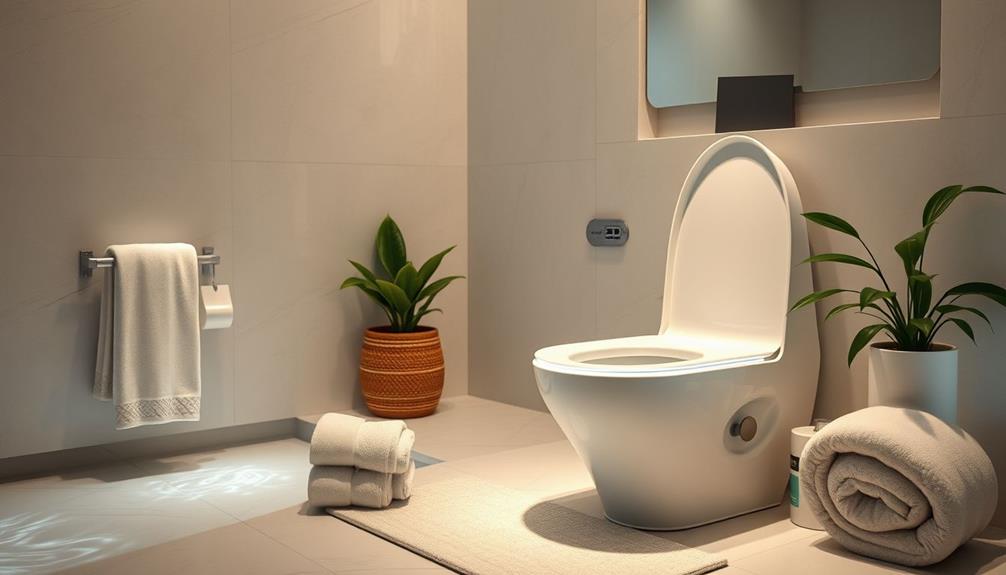Hey there, folks! Ever been in a sticky situation with a clogged toilet and no plunger in sight? Well, fear not, because I’ve got some nifty tricks up my sleeve that’ll have that toilet flowing smoothly in no time.
In this article, I’ll guide you through the ins and outs of fixing a clogged toilet without a plunger. So, grab a seat and get ready to learn some handy techniques that’ll save you from any toilet-related disasters.
Let’s dive in!
Key Takeaways
- Toilet auger and homemade drain cleaner can be effective alternatives to a plunger for clearing toilet clogs.
- Hot water and a mixture of baking soda and vinegar can help break down clogs in a toilet.
- A wire coat hanger can be used to dislodge a clog in a toilet.
- If all else fails, consider calling a professional plumber who has the expertise and tools to handle stubborn clogs.
Understanding the Problem
First, you’ll want to figure out why the toilet is clogged. Understanding the cause of the clog will help you determine the best course of action.
There are several potential DIY remedies that you can try before calling a plumber. One common cause of toilet clogs is a buildup of toilet paper or other debris in the trapway. This can usually be resolved by using a toilet auger or a homemade drain cleaner made of vinegar and baking soda.
Another possible cause is a foreign object stuck in the toilet, such as a toy or a small item accidentally flushed down. In this case, you may need to use a toilet snake or a wire coat hanger to dislodge the object.
Assessing the Water Level
To determine if the water level is too high, you should carefully observe the amount of water in the toilet bowl. If the water is close to the rim or overflowing, it indicates that the water level is indeed high.
Evaluating the effectiveness of your efforts in fixing a clogged toilet is crucial to determine the next course of action. Here are two key factors to consider when assessing the water level:
- Adjusting water flow:
- Check the water supply valve located behind the toilet to ensure it is fully open.
- If necessary, adjust the float valve to regulate the water level.
By evaluating the effectiveness of these adjustments, you can determine if the water level has been successfully lowered.
Now, let’s explore the next method to fix a clogged toilet without a plunger: using the hot water method.
Using the Hot Water Method
One option you can try is pouring hot water into the toilet bowl to unclog it. This method can be effective in breaking down the clog and allowing it to flow through the pipes.
When using hot water, it is important to consider the temperature. The ideal temperature for unclogging a toilet is around 130 to 140 degrees Fahrenheit. However, be cautious not to use boiling water as it may crack the toilet bowl if it is made of porcelain. If your toilet bowl is made of plastic, use water that is slightly cooler, around 120 degrees Fahrenheit.
Trying the Baking Soda and Vinegar Technique
You can also give the baking soda and vinegar technique a try. It’s a natural and effective way to unclog your toilet without using harsh chemicals or a plunger. Here’s how it works:
- Pour one cup of baking soda into the toilet bowl.
- Slowly add two cups of vinegar.
- Let the mixture sit for about 30 minutes.
- Flush the toilet to see if the clog has cleared.
- If needed, repeat the process or move on to other methods.
The baking soda and vinegar combination creates a fizzy reaction that helps break down the clog and clear the drain. It’s a popular alternative to chemical drain cleaners because it’s safe for the environment and won’t damage your pipes. Plus, you probably already have these ingredients in your kitchen pantry.
Give it a try and say goodbye to clogged toilets!
Utilizing a Wire Coat Hanger
Using a wire coat hanger can be an effective method for unclogging a toilet. When faced with a stubborn clog and lacking a plunger, this alternative tool can save the day.
To begin, straighten out the coat hanger, leaving a small hook at one end. Carefully insert the hooked end into the toilet bowl, being cautious not to scratch the porcelain. Gently maneuver the hanger in a back-and-forth motion, aiming to dislodge the blockage. Once the clog is cleared, flush the toilet to ensure proper drainage.
To prevent future toilet clogs, there are simple methods to follow. Avoid flushing excessive amounts of toilet paper or disposing of non-flushable items down the toilet. Regularly cleaning the toilet and using a drain guard can also help prevent clogs.
Employing a Wet/Dry Vacuum
When it comes to dealing with a clogged toilet, sometimes a plunger may not be readily available. In such cases, one effective substitute is a wet/dry vacuum.
Using a vacuum to unclog a toilet involves creating a seal around the drain and applying suction to dislodge the blockage. However, it is important to follow proper vacuuming technique to avoid any potential mess or damage to the toilet.
Vacuum as Plunger Substitute
To fix a clogged toilet without a plunger, grab your vacuum cleaner and attach the hose to the exhaust port. This alternative method is effective and can save you from a messy situation. Here’s how to use your vacuum as a plunger substitute:
-
Safety precautions:
Ensure the area around the toilet is clear of any objects or obstacles.
Avoid using a regular household vacuum cleaner that may get damaged by water. -
Steps to fix the clog:
Set your vacuum cleaner to the highest suction setting.
Place the vacuum hose into the toilet bowl, ensuring a tight seal.
Turn on the vacuum and let it create a strong suction.
Slowly pull the hose out, allowing the suction to dislodge the clog.
Flush the toilet to check if the clog has been cleared.
Remember to exercise caution when attempting alternative plunger methods and always prioritize your safety.
Proper Vacuuming Technique
Remember to be mindful of your posture and use proper technique when vacuuming to avoid straining your back or causing injury.
Vacuuming can be a strenuous activity if not done correctly, so it’s important to follow these tips for a safe and effective cleaning experience.
First, make sure that your vacuum cleaner is properly maintained. Regularly check and clean the filters, empty the dustbin, and inspect the brush roll for any tangled hair or debris. This will ensure that your vacuum performs at its best and prolong its lifespan.
When vacuuming, start by standing up straight and holding the vacuum handle with both hands. Use smooth, back-and-forth motions and overlap each stroke to cover the entire area. Remember to switch sides periodically to avoid overworking one side of your body.
Seeking Professional Help
If you’re unable to unclog the toilet using the methods mentioned, you might want to consider calling a professional plumber for assistance. A professional plumber has the knowledge and expertise to handle even the most stubborn clogs. They have the right tools and equipment to diagnose and fix the problem efficiently.
Here are a couple of reasons why hiring a professional plumber for your clogged toilet is a wise decision:
-
Expertise:
Professional plumbers have undergone extensive training and have years of experience dealing with various plumbing issues. They can quickly identify the cause of the clog and determine the best course of action to resolve it. -
Emergency services:
Many professional plumbers offer emergency services, which means they are available 24/7 to assist you in case of a toilet clog or any other plumbing emergency. They understand the urgency of the situation and will respond promptly to prevent further damage to your plumbing system.
Frequently Asked Questions
Can I Use Dish Soap Instead of Baking Soda and Vinegar to Unclog a Toilet?
Yes, you can use dish soap as an alternative to baking soda and vinegar to unclog a toilet. It can help break down the clog and lubricate the pipes. However, it may not be as effective as the traditional method.
Is It Safe to Use a Wire Coat Hanger to Unclog a Toilet?
Using a wire hanger to unclog a toilet can cause damage to the pipes and should be avoided. Instead, try alternatives like using a combination of hot water and dish soap to break up the clog.
Will Using a Wet/Dry Vacuum Damage My Toilet?
Using a wet/dry vacuum to unclog a toilet can potentially damage it. It’s safer to use a plunger alternative or a toilet auger, as they are designed specifically for this purpose.
How Much Hot Water Should I Pour Into the Toilet Bowl?
I poured hot water into the toilet bowl until it was about halfway full. The hot water temperature helped to break up the clog, and it was one of the alternative methods I tried.
What Are the Signs That I Need to Seek Professional Help for a Clogged Toilet?
When should I call a plumber for a clogged toilet? If the clog persists after using DIY methods or if you notice signs like water backup or foul odors, it’s time to seek professional help. To prevent future clogs, avoid flushing non-flushable items.
Conclusion
In conclusion, unclogging a toilet without a plunger may seem like a daunting task, but it is definitely possible. By assessing the water level and using the hot water method, you can tackle the problem head-on. Trying the baking soda and vinegar technique is another option, as is utilizing a wire coat hanger or employing a wet/dry vacuum. If these methods fail, it may be time to seek professional help.
Remember, with a little knowledge and creativity, you can overcome even the most stubborn clogs and restore your toilet to its proper functioning state.










